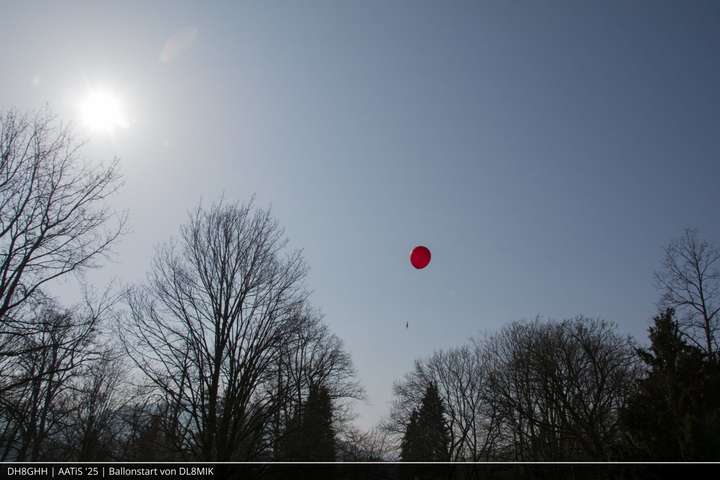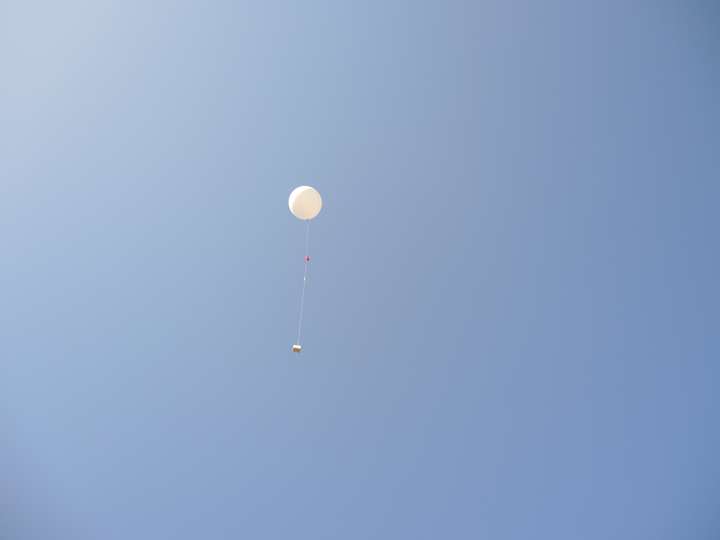40. AATiS-Kongress in Goslar
(DE) 10 Ballons in einer Stunde!
Am 8. März 2025 hatte ich einen Vortrag beim 40. AATiS Bundeskongress. Am 9. gab es dann einen Massenstart mit 9 kleinen (26g Amazon) und ein mittelgroßer Ballon (HY-350), der eine Wenet-Nutzlast zur Bildübertragung in die Stratosphäre brachte.
Insgesamt verlief der Start relativ gut!
Die Wenet-Nutzlast ist hob gegen 10:40 Uhr Ortszeit als erstes ab. Die kleineren Sonden folgten dann innerhalb von einer Stunde. Die Radiosonden (RS41 mit RS41ng) wurden im Voraus mit den Rufzeichen DF0AIS-1 bis DF0AIS-9 vorbereitet.
Leider hat die Wenet-Nutzlast ab ca. 10km aufgehört jegliche Daten zu übertragen und sendete nur noch einen Träger auf 437.0Mhz aus. Die einzigen Empfänger für Wenet waren mein Eigener, der eine Yagi-Antenne, die Harald, DL2SAX, und Leon, DL3ON, mitbrachten, nutzte und DB0FC. Mein Empfänger funktionierte relativ gut, obwohl die Antenne für den ersten Aufstieg relativ ungeeignet war. Da leider hinterher keine Daten mehr übertragen wurden, konnte nicht weiter getestet werden. DB0FC funktionierte sehr gut. Er ist dauerhaft installiert und läuft 24/7.
Die ersten fünf kleinen Ballon waren weiß, die vier Folgenden rot. Die Daten wurden noch nicht analysiert, ich konnte aber auf den ersten Blick keinen Leistungsunterschied feststellen. Die Füllmenge des Helium wurde nicht genau gemessen, weshalb die Aufstiegsrate und die maximale Höhe relativ stark zwischen etwas über 9km und knapp unter 15km schwankte.
15. März 2025: Wenet-Nutzlast erfolgreich geborgen!
Die Wenet-Nutzlast wurde vollständig aus einem Baum geborgen! Vielen Dank an das Bergungsteam!
(EN) 10 Balloons in an hour!
On the 8th of March, 2025, I did a presentation about small radiosondes at the 40th AATiS Bundeskongress. On the 9th, we then did a mass launch with 9 small balloons (26g Amazon) and a medium size balloon (HY-350) carrying a Wenet image transmission payload
Overall, it went pretty well!
The Wenet payload went up first, launching around 10:40 local time. The smaller ones then followed within an hour. The radiosondes (RS41 with RS41ng) were prepared in advance and used horus-v2 with the callsigns DF0AIS-1 through DF0AIS-9.
Sadly though, the Wenet payload stopped transmitting any data at around 10km height and only transmitted a carrier on 437.0Mhz instead. The only receivers for Wenet were my own and DB0FC. My receiver used a Yagi antenna which Harald, DL2SAX, and Leon, DL3ON, brought with them. It worked quite well though it was suboptimal for the launch and we couldn't use it later because there wasn't any data transmitted. DB0FC worked quite well receiving many packets. It is permanently installed and running 24/7.
The first five small balloons were white, the four ones coming after that were red ones. The data hasn't been analyzed yet though I didn't see any big performance difference. The amount of Helium was not measured accurately so the ascent rate and the maximum altitude fluctuated quite a bit between a little over 9km and nearly 15km.
March 15th, 2025: Wenet payload recovered!
I'm happy to announce that the Wenet payload has been succesfully recovered from a tree! Thanks to the recovery team!


